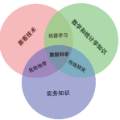Educational data scientists often conduct research with the hopes of translating findings into lasting change through policy, civil society, or other channels. However, the bridge from research to practice can be fraught with sociopolitical frictions that impede, or altogether block, such translations -- especially when they are contentious or otherwise difficult to achieve. Focusing on one entrenched educational equity issue in US public schools -- racial and ethnic segregation -- we conduct randomized email outreach experiments and surveys to explore how local school districts respond to algorithmically-generated school catchment areas ("attendance boundaries") designed to foster more diverse and integrated schools. Cold email outreach to approximately 4,320 elected school board members across over 800 school districts informing them of potential boundary changes reveals a large average open rate of nearly 40%, but a relatively small click-through rate of 2.5% to an interactive dashboard depicting such changes. Board members, however, appear responsive to different messaging techniques -- particularly those that dovetail issues of racial and ethnic diversity with other top-of-mind issues (like school capacity planning). On the other hand, media coverage of the research drives more dashboard engagement, especially in more segregated districts. A small but rich set of survey responses from school board and community members across several districts identify data and operational bottlenecks to implementing boundary changes to foster more diverse schools, but also share affirmative comments on the potential viability of such changes. Together, our findings may support educational data scientists in more effectively disseminating research that aims to bridge educational inequalities through systems-level change.
翻译:教育数据科学家往往会开展研究,希望通过政策、公民社会或其他渠道将发现转化为持久的变革。然而,从研究到实践的桥梁可能会受到社会政治摩擦的困扰,这些摩擦可能会妨碍、甚至完全阻止这些转化,尤其是在它们具有争议性或其他难以实现的情况下。针对美国公立学校中一种根深蒂固的教育公平问题——种族和族裔隔离,我们进行随机电子邮件外展实验和调查,以探索在新的校园边界设计下促进更具多样性和融合性学校的情况下,当地学区如何做出响应。向800多个学区的大约4320名当选学校委员会成员发送冷邮件,通知他们可能的变化边界,平均开放率高达近40%,但相对较小的按键率为2.5%,以显示这些变化的交互式仪表板。然而,委员会成员似乎对不同的信息传达技巧有反应--尤其是那些将种族和族裔多样性与其他当务之急的问题(如学校容量规划)相吻合的技巧。与此同时,研究的媒体报道在更隔离的学区中推动更多的仪表板参与。从多个地区的校委会和社区成员中获得了少量但丰富的调查结果,这些结果识别了实施边界变化以促进更具多样性学校的数据和操作瓶颈,但也分享了对此类变化可能可行性的肯定意见。综合而言,我们的发现可能支持教育数据科学家更有效地传播旨在通过系统级变革弥合教育不平等的研究。




